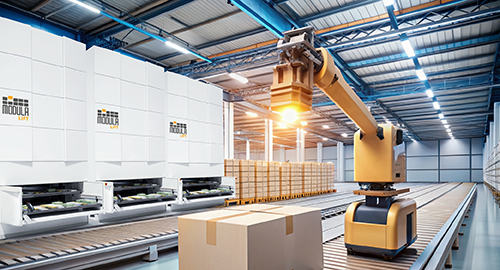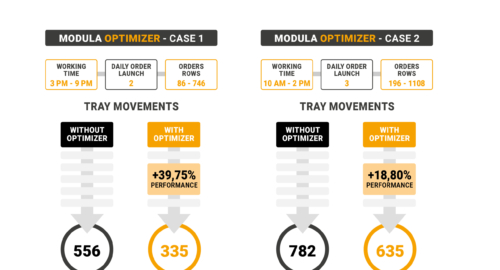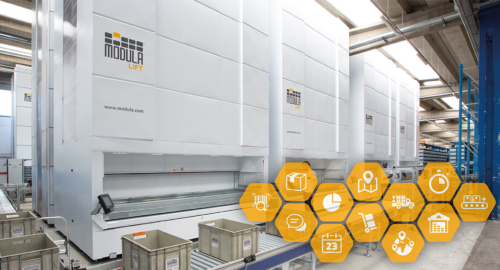Doing inventory is always a chore for anyone, whether you are talking about a small or medium-sized business or a complex and multi-site supply chain.
The volume of items changes, and so do the staff involved, but it is always a boring operation that takes a lot of time which could be better spent in some other way.
Can you not just do away with inventory then?
Unfortunately, no, as it is a fundamental task for controlling your warehouse’s situation in terms of its stocks of materials, products and semi-finished products at the end of a given period. This activity is sometimes done periodically by some companies to avoid problems with reordering and production.
If you are managing an e-commerce store, doing inventory is even more important for reducing discrepancies between physical stocks and the numbers held in your online shop. The modern consumer is knowledgeable and demanding. They expect speed and cost-effectiveness from product distribution systems and for this reason Distribution Centres have taken on a strategic role in the supply chain. They must therefore be managed in the best way possible, even if this means doing the inventory several times a year to maintain precise information about product availability and quantities.
The advent of new technologies has brought many benefits to industrial processes and in particular to the automation of warehouse management with many positive implications for running inventory. But let’s not get ahead of ourselves, first of all we need to understand the three main reasons why inventory is needed.
Regulatory obligations
First of all, it is worthwhile remembering that doing inventory is required to fulfil statutory and fiscal principles for quantifying and evaluating remainders. In particular, inventory is fundamental to completing your year end accounts, must be completed upon setting up your business and every year thereafter.
In this last case, it must relate to the specific company year end date and contain all goods divided into categories according to type as well as the value of each individual item in order to be able to estimate your company’s worth in terms of assets and liabilities and then be recorded in your inventory records.
The inventory is submitted along with the Company Accounts, Financial Statement and Summary Accounts (art. 2217, para. 2 of the Civil Code).
Ensure efficiency in the production process
The second reason concerns the management of the warehouse itself and of orders. A precise and consistently executed inventory allows you to keep track of all goods inwards and goods despatched.
Any delays due to, for example, the lack of a raw material needed for the production process will negatively affect your company’s overall profits.
Getting precise stock availability
A very common problem is not having precise information about actual stock availability due to discrepancies between the goods physically in the warehouse and their expected quantity.
To avoid such discrepancies, simply keep a meticulous eye on all operations carried out in the warehouse so that you can watch for any goods which are being depleted and proceed to reorder them in time for production and/or despatching the order to the customer.
To optimise this, the best solution is to schedule the reordering of items to take into account lead times for delivery to the customer and delivery from your suppliers.
How do you do a warehouse inventory quickly?
The ways you can carry out your inventory can be grouped into the following four categories.
Paper and pen (and calculator)
This is the traditional method and definitely only suitable if you have a small warehouse and a limited number of products. In this case, the first thing you have to do is to divide your products into categories; there are no pre-defined categories so it is up to you to find the best way to subdivide them according to your business.
Next, proceed with further product subdivisions, taking into account the speed with which the items are running out so you can keep watch on the ones that require frequent reordering.
To get an overview of the warehouse stock situation write information next to each product macro category which includes the names of your suppliers and your minimum required stock level.
Then label the shelves and catalogue the goods by annotating everything on multiple sheets and creating tables that reflect the physical subdivisions inside the warehouse.
You can then, for example, create a table with information on which category the goods belong to, product arrival date, product cost, quantity, etc., and thus create a proper database.
Keep the sheet constantly up-to-date so you don’t find yourself having too many cataloguing operations all at once. This would increase the likelihood of errors.
Excel spreadsheet
A simple solution to speed up inventory operations is to manage the warehouse efficiently, carefully and meticulously. This means constantly keeping track of all the operations that take place inside it: despatch, orders, stocks, returns, and so on. If you do not have the possibility of using business management software that can do this automatically for you, you can use a simple Excel spreadsheet.
In this way, at the end of the year you will not have to waste valuable time checking over everything, but instead you will have detailed summary tables in front of you.
Here are some tips for building a warehouse management application using Excel spreadsheets that allow you to speed up inventory operations.
- Use three separate sheets:
– one for products, where you record the complete list of goods with their relative supplier and stock information
– one for goods inwards movements to record the date of arrival and quantity of goods in the warehouse
– one sheet for despatches - If your warehouse is used for stocking raw materials, semi-finished products and finished products, in this case use three separate sheets to distinguish them
- Connect these sheets together. How? For example, report the column containing the actual stock figure from the product table into the sheet containing despatch information. In this way, before confirming despatch, you can safely check actual availability without delay and, of course, by only having to update one single sheet you can keep all your data updated in real time
- To automate operations, use drop-down menus. For example, in the order sheet, create a drop-down menu which allows you to select the products relating to the order to be despatched from those listed in the first “Products” sheet.
There are many pre-compiled sheets available online that can help you build your Excel file. However, this is still only a tool which can certainly be very helpful but only if kept constantly up-to-date.
Warehouse Management Software
If this activity is central to your business and is worth making an investment that will repay you over time, then you may opt for management software.
A Warehouse Management System (WMS) actually allows you to keep track of all handling operations that take place inside your warehouse. Combining this with the use of mobile terminals, such as barcode or RFID readers, operators can very quickly and very easily keep the situation under control.
Inventory control using WMS is constantly up-to-date and this allows you to speed up the calculations needed for your Company Accounts, which, as stated above, are required for fiscal and statutory reasons.
In fact, your company accounts need to show details and values of the assets and liabilities relating to your business, and all goods divided into categories according to type and value must be listed, including an indication of each category’s value.
Your management system will also contain all your historical records, so auditing any mistakes will be really easy. As every single company is different, your software can be set up according to individual needs and individual production streams.
Vertical warehouses
An all-in-one solution. Automatic vertical warehouses are a solution that allows you to automate your warehouse at low cost, and also resolve your inventory problems. This technology will replace your old shelves, which are bulky and impractical for handling goods, and not at all ergonomic for your operators.
Automatic vertical warehouses are structures up to 16 metres tall, and in which trays move around. These trays can hold up to 990 kg and are propelled by internal elevators which bring them directly to the delivery level.
The trays inside the warehouse can hold products of different height, size, volume and weight. The software can adjust the unit height automatically thus maximising the vertical space inside the warehouse and avoiding waste, with a tray storage pitch of 25 mm.
The vertical warehouse WMS allows you to manage your orders automatically via a convenient PC interface: simply select the product you are looking for, enter the quantity and submit the request. In just a few seconds the product you were looking for will be made available on the delivery level. Not only that: the software will keep a record of this operation automatically and you will be able to do your inventory with one click.
In fact, the WMS monitors all movements and knows how many products there are in the warehouse and where they are located: get the stock situation at any time with just one click and have your inventory in real time.
Find out if you need an automatic vertical warehouse: take our test!
7+1 Deadly Sins of the Warehouse



